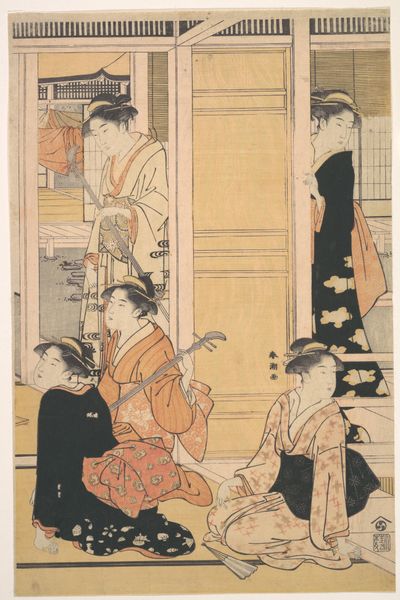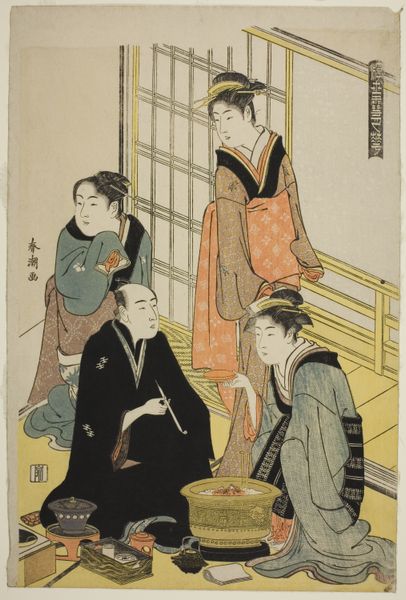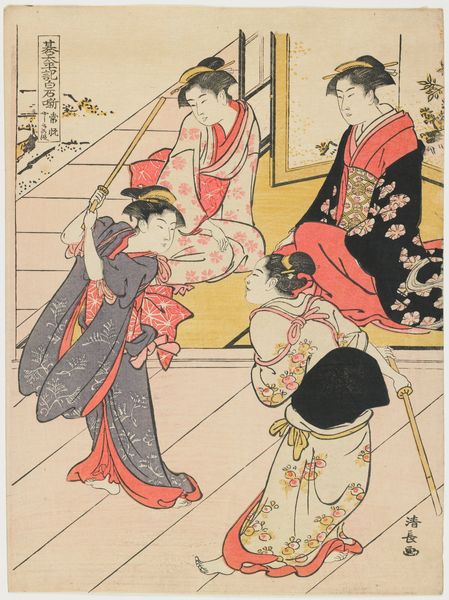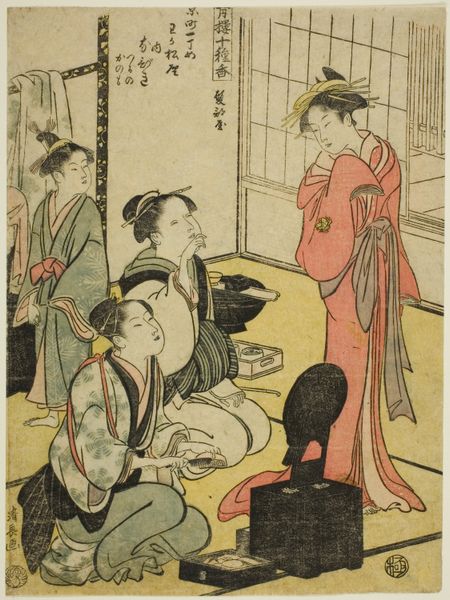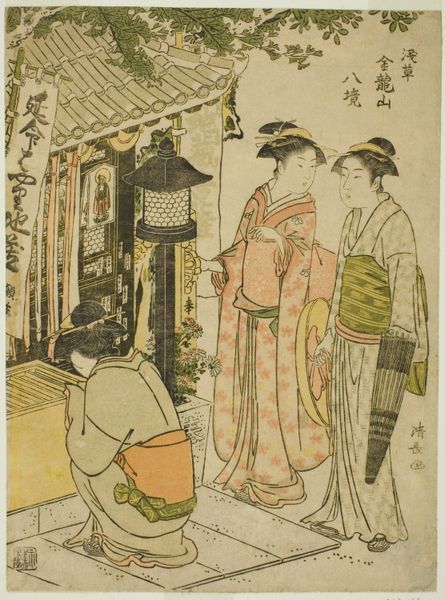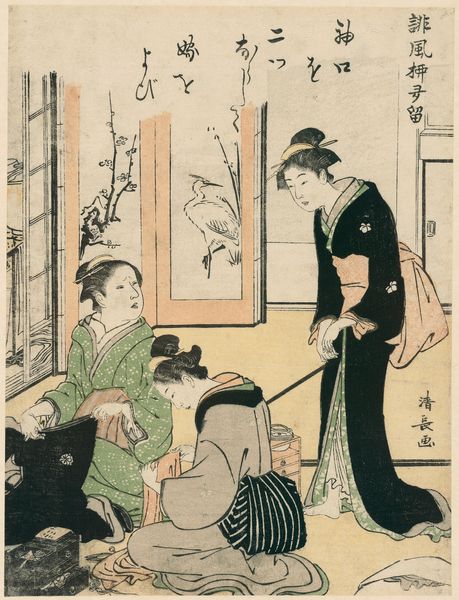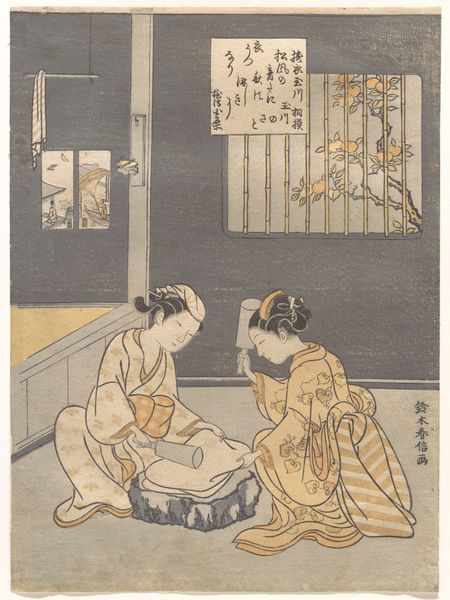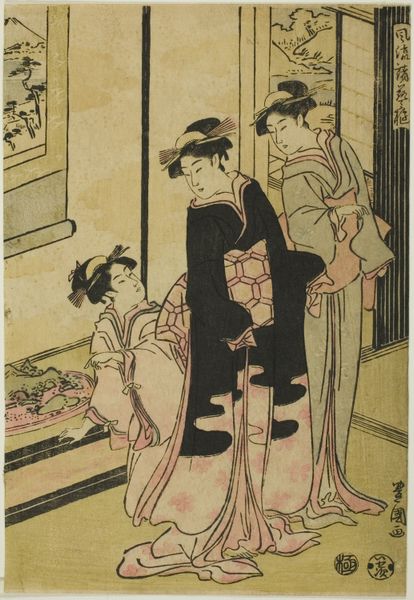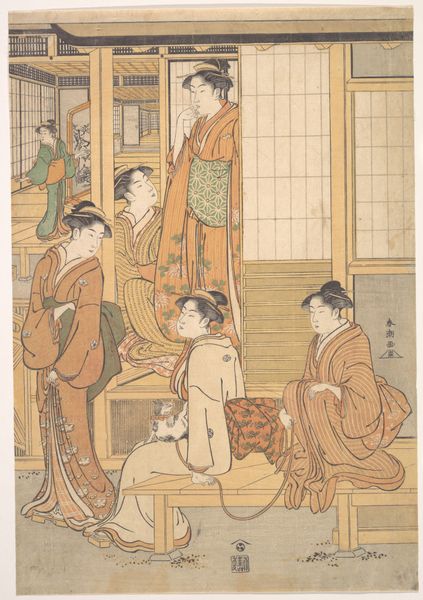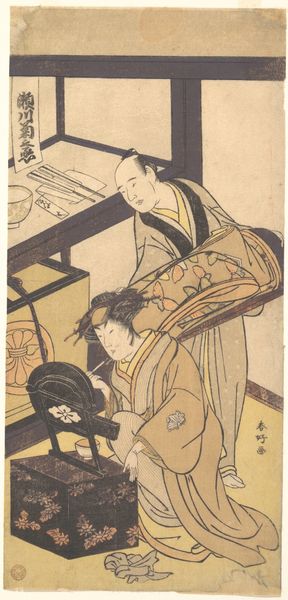
The Actor Matsumoto Koshiro IV with his family, from an untitled series of four prints showing Actors in private life c. 1783 - 1784
0:00
0:00
#
portrait
# print
#
asian-art
#
ukiyo-e
#
genre-painting
Dimensions: 38.1 × 25.7 cm
Copyright: Public Domain
Curator: This is a print by Torii Kiyonaga, from a series created around 1783-84. It's titled "The Actor Matsumoto Koshiro IV with his family," and depicts, as the name suggests, a celebrated Kabuki actor in a private moment with his family. Editor: It has such a tranquil atmosphere, almost dreamlike in its simplicity. The pale tones and the flat perspective really draw you into their intimate world. What can you tell me about the making of it? Curator: As a ukiyo-e woodblock print, it would have been a collaborative effort. Kiyonaga likely designed the image, then a block cutter would carve the design into woodblocks, and finally, a printer would apply ink and paper to create the finished print. We see this kind of division of labor frequently within printmaking. Think about the economy around print consumption: affordable art that was mass produced. Editor: The poses seem quite studied, which interests me. Considering the position of actors in society at that time, how might this image function? Were these intimate glimpses typically available to the public? Curator: Actors, despite their fame, occupied a lower social stratum. Prints like these allowed the public a 'behind-the-scenes' look, but I agree that it's a curated view. The image elevates Matsumoto Koshiro IV by emphasizing his role as a family man. See the everydayness suggested by the tea set on the floor? The picture presents him in a composed domestic setting, in opposition to the transgressive nature of his art. He holds a small smoking pipe, appearing thoughtful. I would guess the intended audience enjoyed the dichotomy of private versus stage persona. Editor: And in terms of technique, I'm really struck by the use of line and the subtle variations in color to define form and texture, particularly in the kimonos. Curator: Indeed. The skillful use of line, characteristic of ukiyo-e, creates a sense of depth without relying on Western perspective techniques. The careful attention to detail in the textile patterns also offers insight into the period's material culture and textile production. The diamond pattern of the central character’s robe is especially telling in my mind. Editor: Thank you. Reflecting, it shows how societal and art worlds worked then, doesn't it? Curator: Precisely! This work reminds us to analyze the socio-economic context within which it was created and consumed.
Comments
No comments
Be the first to comment and join the conversation on the ultimate creative platform.


